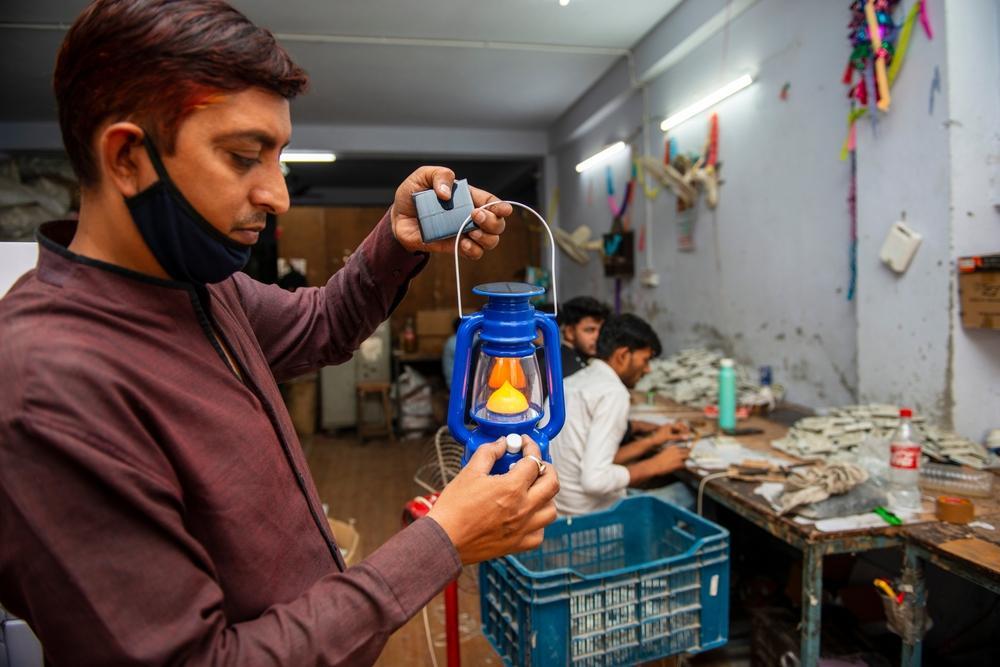Introduction to the RAMP scheme for MSMEs
The micro, small, and medium enterprises (MSMEs) sector plays a vital role in the Indian economy. These enterprises contribute significantly to employment generation, innovation, and inclusive growth. However, MSMEs often face challenges such as limited access to finance, technological constraints, and lack of business development opportunities. To address these issues, the Indian government has introduced the Raising & Accelerating MSME Performance (RAMP) scheme. In this comprehensive guide, we will explore the various aspects of the RAMP scheme and how it can help unleash the potential of MSMEs in India.
Understanding the Importance of MSMEs in India
MSMEs are the backbone of the Indian economy, contributing around 29% of the country’s GDP and employing over 110 million people. These enterprises are spread across various sectors, including manufacturing, services, and trade. MSMEs have the potential to drive economic growth, promote entrepreneurship, and increase exports. They also play a crucial role in reducing regional imbalances by creating employment opportunities in rural and semi-urban areas. Recognizing the significance of MSMEs, the Indian government has taken several initiatives to support and promote their growth.
What is the Raising & Accelerating MSME Performance (RAMP) scheme?
The RAMP scheme is a government initiative designed to enhance the competitiveness and performance of MSMEs in India. It aims to provide financial assistance, technology upgradation, and capacity building support to eligible enterprises. The scheme focuses on four key areas: improving access to credit, enabling technology adoption, facilitating market linkages, and promoting entrepreneurship. Under the RAMP scheme, MSMEs can avail of various benefits and incentives to overcome the challenges they face and unlock their potential for growth.
Benefits of the RAMP Scheme for MSMEs
The RAMP scheme offers a range of benefits to MSMEs, making it an attractive option for entrepreneurs looking to scale up their businesses. One of the key benefits is improved access to credit. MSMEs often struggle to secure loans from traditional financial institutions due to their limited financial track record. The RAMP scheme addresses this issue by providing credit guarantee facilities and collateral-free loans, making it easier for MSMEs to access the funds they need for expansion and modernization.
Another significant benefit of the RAMP scheme is the support for technology upgradation. MSMEs often face challenges in adopting new technologies due to lack of awareness, financial constraints, and limited technical expertise. The RAMP scheme offers financial assistance and technical support to help MSMEs upgrade their machinery, implement advanced manufacturing techniques, and adopt digital solutions. This not only improves their productivity and efficiency but also enhances their competitiveness in the market.
Eligibility Criteria for the RAMP Scheme
To avail the benefits of the RAMP scheme, MSMEs need to meet certain eligibility criteria. The scheme is open to enterprises classified as micro, small, or medium under the MSME Development Act, 2006. The eligibility criteria may vary based on the sector, location, and nature of the enterprise. Generally, MSMEs should have a valid Udyog Aadhaar Memorandum (UAM) and comply with the regulatory requirements set by the government. It is essential for MSMEs to thoroughly understand the eligibility criteria and ensure they meet all the necessary requirements before applying for the RAMP scheme.
How to Apply for the RAMP Scheme
Applying for the RAMP scheme involves a systematic process that requires MSMEs to submit relevant documents and meet specific guidelines. To begin the application process, MSMEs need to visit the official website of the Ministry of Micro, Small & Medium Enterprises. The website provides detailed information about the scheme, application forms, and supporting documents required. MSMEs should carefully fill in the application form, providing accurate information about their business, financials, and growth plans. It is advisable to seek professional assistance or guidance to ensure the application is complete and meets all the necessary requirements.
Case Studies of Successful MSMEs under the RAMP Scheme
The RAMP scheme has already witnessed success stories of MSMEs that have benefitted from its support and incentives. Let’s take a look at a few case studies to understand the impact of the RAMP scheme on Indian MSMEs.
Case Study 1:
Sector: Textile and Apparel
Benefit Received: Collateral-Free Loan
Impact: A small textile manufacturer, struggled to expand its production capacity due to limited access to credit. Under the RAMP scheme, the company secured a collateral-free loan of INR 50 lakhs, allowing it to invest in new machinery and increase its production. As a result, The Textile business witnessed a 30% increase in output, leading to higher revenues and employment opportunities.
Case Study 2:
Sector: Electronics Manufacturing
Benefit Received: Technology Upgradation Support
Impact: A medium-sized electronics manufacturer, faced challenges in adopting advanced manufacturing technologies. Through the RAMP scheme, the company received financial assistance and technical guidance to upgrade its production line with automated machinery. This enabled the Electronics firm to enhance its product quality, reduce production costs, and compete effectively in the market.
These case studies highlight the transformative impact of the RAMP scheme on MSMEs, enabling them to overcome barriers and achieve sustainable growth.
Challenges Faced by MSMEs in India and How the RAMP Scheme Addresses Them
Despite their significant contribution to the Indian economy, MSMEs face several challenges that hinder their growth and development. Some of the key challenges include limited access to finance, inadequate infrastructure, technological constraints, and lack of market linkages. The RAMP scheme addresses these challenges through its comprehensive approach focused on credit availability, technology upgradation, market access, and entrepreneurship development.
The RAMP scheme provides MSMEs with access to credit through various financial institutions and credit guarantee facilities. This helps overcome the challenge of limited access to finance and ensures that MSMEs have the necessary funds to invest in their business operations. Additionally, the scheme supports technology upgradation by providing financial assistance and technical guidance. This addresses the technological constraints faced by MSMEs and enables them to adopt advanced manufacturing techniques and digital solutions.
Furthermore, the RAMP scheme facilitates market linkages by connecting MSMEs with potential buyers, both domestic and international. This helps MSMEs expand their market reach and find new business opportunities. The scheme also focuses on promoting entrepreneurship by providing training, mentorship, and incubation support to aspiring entrepreneurs. By addressing these challenges, the RAMP scheme empowers MSMEs to overcome barriers and unlock their full potential.
Government Support and Initiatives for MSMEs in India
The Indian government has been proactive in supporting and promoting the growth of MSMEs. In addition to the RAMP scheme, several other initiatives have been launched to create an enabling ecosystem for MSMEs. Some of the key government support and initiatives include:
Credit Guarantee Fund Trust for Micro and Small Enterprises (CGTMSE): This initiative provides collateral-free credit facilities to MSMEs by guaranteeing a significant portion of the loan amount. It helps MSMEs overcome the challenge of limited collateral and enhances their access to credit.
Udyog Aadhaar Registration: The Udyog Aadhaar registration process simplifies the registration and documentation requirements for MSMEs. It enables MSMEs to obtain a unique identification number, making it easier for them to avail of various government schemes and incentives.
Public Procurement Policy for Micro and Small Enterprises (MSEs): The government has implemented a policy that mandates a certain percentage of procurement from MSEs by public sector enterprises. This policy provides MSMEs with an assured market and encourages their participation in government tenders.
These initiatives, along with the RAMP scheme, demonstrate the government’s commitment to supporting the growth and development of MSMEs in India.
Conclusion: Unleashing the Potential of MSMEs with the RAMP Scheme
The RAMP scheme is a game-changer for MSMEs in India, providing them with the necessary support and incentives to overcome challenges and unleash their potential. By improving access to credit, facilitating technology upgradation, promoting market linkages, and nurturing entrepreneurship, the RAMP scheme empowers MSMEs to thrive in a competitive business environment. With the government’s continued support and initiatives, MSMEs have the opportunity to contribute even more significantly to the Indian economy.
Explore your business ideas with a business loan from Tata Capital. To know more, visit www.tatacapital.com www.tatacapital.com.








 7 mins read
7 mins read

 Previous Post
Previous Post













